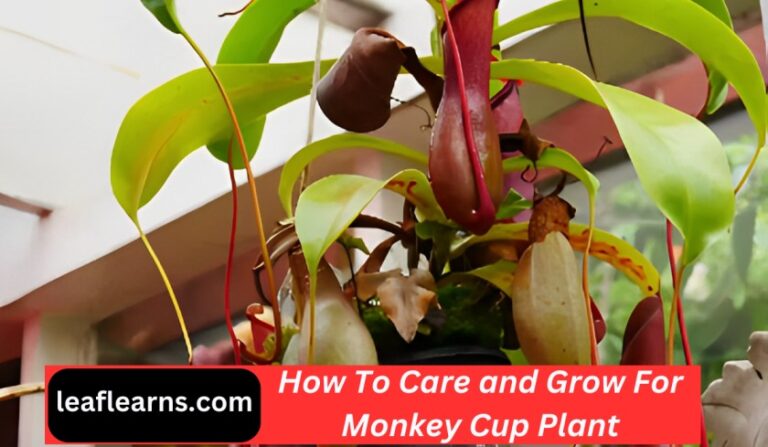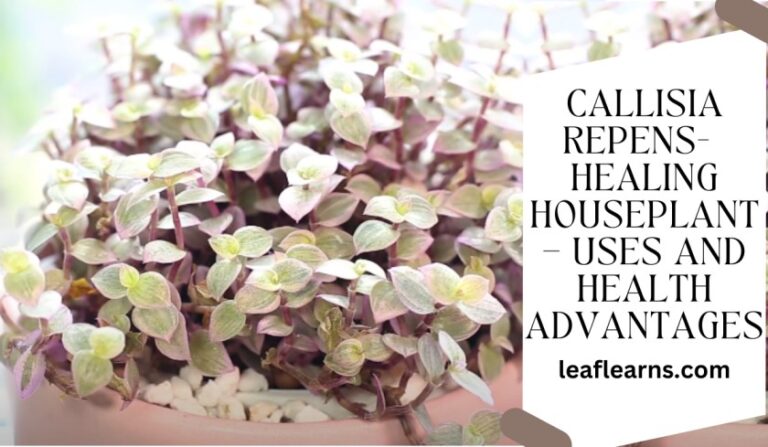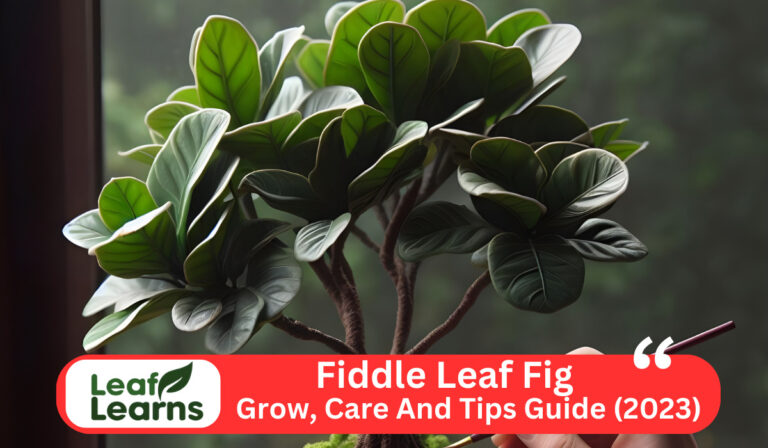Anthurium Veitchii ‘King Anthurium’ Care & Info (2023)
A captivating tropical plant, Anthurium Veitchii is also called King Anthurium and it is characterized by glossy, heart-shaped leaves and unique greenish-white spathes. Originally from South America, specifically Colombia, it thrives in warm and humid environments.

Embracing moss-covered branches and basking in dappled sunlight, Anthurium Veitchii grows in the verdant rainforests of Colombia. Its otherworldly beauty quickly captivated European collectors after it was discovered in the late 1800s by plant hunter James Veitch.
| Common Name | King Anthurium |
| Scientific Name | Anthurium-Veitchii |
| Family | Araceae |
| Origin | South America, Colombia |
| Plant Type | Evergreen Perennial |
| Size | 2 to 4 feet tall |
| Lifespan | Long-lived |
| Leaf Colour | Dark green, glossy |
| Leaf Size | Large, heart-shaped |
| Flower | Unique, greenish-white spathes |
| Light | Bright, indirect sunlight |
| Water | Regular, well-draining soil |
| Soil | Orchid mix, well-aerated |
| Temperature | 65°F to 80°F (18°C to 27°C) |
| Humidity | High humidity preferred |
| USDA Zone | 10-12 |
| Fertilizer | Balanced liquid fertilizer, diluted |
| Propagation | Division, offsets, seeds |
| Pruning | Remove old or damaged leaves |
| Pests | Aphids, mealybugs, scale |
| Toxicity | Mildly toxic to pets and humans |
| Uses | Indoor ornamental plant, tropical gardens |
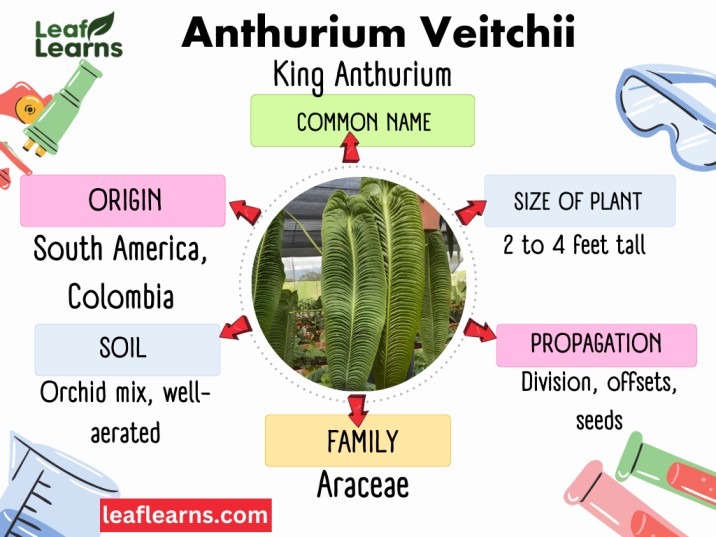
Contents
- 1 What makes King Anthurium so special?
- 2 King Anthurium Veitchii Care
- 3 Anthurium Veitchii Propagation
- 4 Growth Zone
- 5 Pruning Anthurium Veitchii
- 6 Repotting Anthurium Veitchii
- 7 How to Get King Anthurium to Bloom
- 8 Growth Rate and Size
- 9 Anthurium Veitchii Flower
- 10 Anthurium veitchii Narrow Form
- 11 Foliage
- 12 Appearance and Fragrance
- 13 Underwatering And Overwatering
- 14 Common Pests and Diseases
- 15 Problems and Solutions
- 16 Anthurium Veitchii Narrow vs Wide
- 17 Toxicity
- 18 Varieties/Types
- 19 Uses
- 20 Exploring the Enchanting World of King Anthurium Characteristics
- 21 Mastering the Art of Caring: A Global Horticultural Pursuit
- 22 FAQs
What makes King Anthurium so special?
- The Majesty of Leaves: Its leaves can reach a length of 3 feet and boast a stunning iridescent sheen. As a result of the intricate veining, each leaf has a unique texture and depth.
- Bring the lushness of the rainforest indoors with A Touch of the Tropics! Humid environments make Anthurium-Veitchii thrive, adding an exotic touch to any interior.
- A Surprisingly Resilient King: Do not let its regal appearance fool you; this anthurium is highly adaptable. Taking good care of it will allow it to grace your home for a long time to come.
King Anthurium Veitchii Care
Light Requirement
The well-being of Anthurium-Veitchii depends on light. Bright, indirect sunlight mimics its natural habitat, which makes this tropical plant thrive.
Make sure it receives filtered sunlight during summer, avoiding harsh rays. During the winter, make sure it receives ample light, possibly from a window that is well-lit.
It is important to provide consistent, indirect light throughout spring and fall for optimal growth. The growth of a plant can be affected by insufficient light, causing it to become leggy.
Water Requirements
For King Anthurium to grow lushly, it is crucial to understand its watering needs. Moisture is crucial to this tropical beauty’s flourishing, but avoiding waterlogging is crucial as well.
It is important to maintain a regular watering schedule in the summer, in order to keep the soil consistently moist. During the fall, reduce watering slightly, letting the soil dry between watering sessions.
If you want to prevent overwatering during the plant’s dormant period, let the soil dry out more in winter.
It is important to water plants more regularly in spring as they are in the midst of renewed growth. In addition to stunting the growth of the plant, overwatering can cause root rot and affect its tallness.
Seasonal Sips
- During hot months, Veitchii should be watered more frequently, maybe every 5-7 days.
- The cooler season requires less frequent watering, maybe once every 10-14 days. You should wait a bit longer between drinks so the soil can dry out.
- Watering should be adjusted according to temperature and humidity during spring and fall.
Soil Requirement
Unlike other tropical plants, Anthurium-Veitchii requires a special type of soil to survive. Peat moss and perlite are combined in an orchid mix for an ideal growing environment.
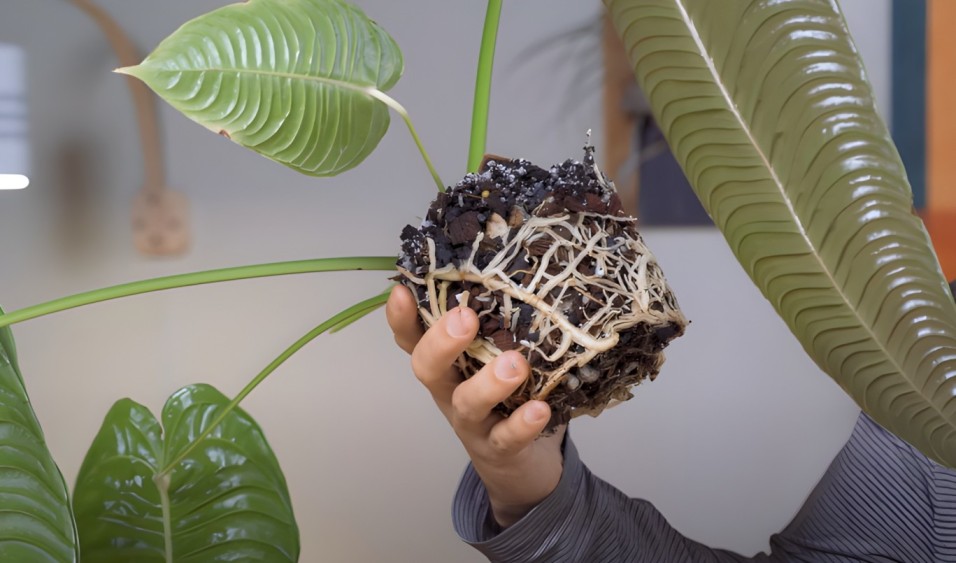
Ensure that the soil remains moist during the summer to encourage optimal growth. Let the topsoil dry out more in the fall and winter to prevent waterlogging.
As spring arrives, the soil must be kept well-aerated and watered regularly. In the fall, let the soil dry between watering sessions by reducing the amount of water applied. Plant health is directly influenced by soil conditions, affecting the plant’s height.
Temperature Requirement
As the undisputed king of anthuriums, King Anthurium thrives in a warm, humid climate, such as balmy summer days and chilly winter nights.
In order to keep those emerald leaves gleaming and those aerial roots reaching for the skies, it adapts to the seasons with specific needs.
Imagine the king reclining in a dappled woodland glade during the summer. Make sure the room is between 70 and 80°F (21-26°C) and that it has bright, indirect light.
The king’s palace should be kept at 65-70°F (18-21°C) during the winter as the days shorten. Be careful not to make those velvety leaves shiver with cold drafts or sudden temperature drops.
Slowly raise the temperature as spring springs into life as the temperature rises along with the season. The leaves emerge in a heart-shaped pattern as a result, which encourages new growth. Autumnal Adaptation: Keep temperatures at 60-65°F (15-18°C) when autumn leaves start to crisp.
Humidity Requirement
Summer: crank up the humidity when the temperature soars! Think misty mornings in the jungle with 70-80% humidity. If you want your plants to stay hydrated, group them together, or use a humidifier.
Winter: Adjust your approach as the air becomes drier. It is ideal to have a humidity level of 60-70%.
Spring: Increase humidity along with temperatures. The amount of leafy monarchs you want to wake up from their winter slumber should be 65-70%.
With the passing of the autumnal equinox, humidity should decrease as well. Fall is best when the temperature is between 60 and 65%.
Fertilizer Requirement
The summer sun brings summer fun, and your Veitchii craves a steady diet. Once a month, fertilize with a 10-10-10 NPK blend diluted to half strength. As a result, it is able to maintain rapid summer growth and unfurl those massive emerald leaves.
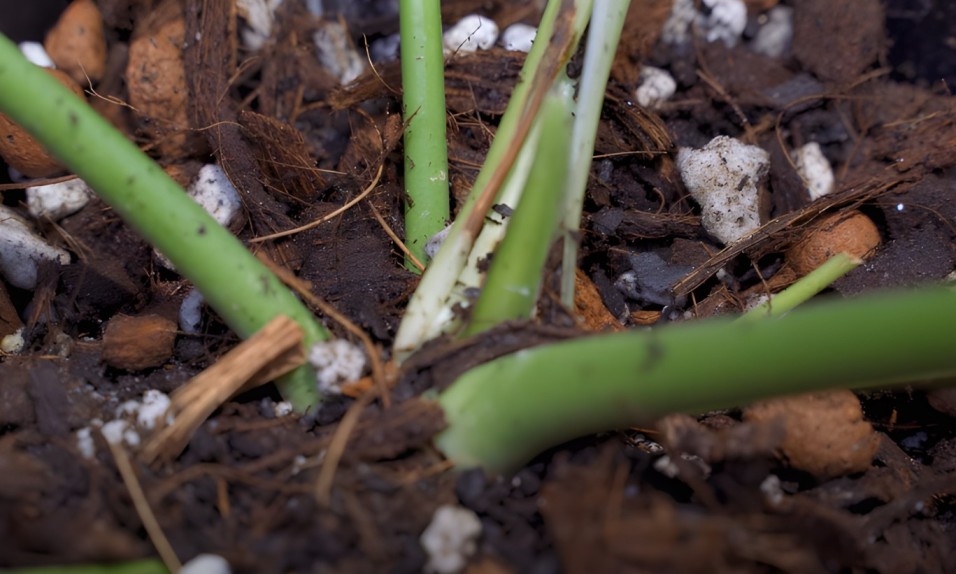
During autumn, your Veitchii’s growth spurt slows down as days shorten and temperatures dip. Reduce feeding to twice a year using the same diluted 10-10-10 mix.
During the plant’s quieter stage, this gentle feeding ensures that the soil remains alive without being overfed. A Veitchii that has gone into semi-dormancy during the winter will go into winter slumber when winter tightens its grip on it.
Feed the plant as little as possible during this period in order not to stress it. Until spring arrives, make sure the humidity is maintained properly. In the springtime, your Veitchii wakes up with new vigor as the sun begins to warm the earth.
To fuel its spring growth spurt, continue fertilizing with the 10-10-10 mix every month. As the sun touches the leaves, they reach for the sky and bask in the gentle warmth of the sun.
Potting Requirement
You should choose a pot that is slightly larger than the root ball, so that the roots have room to grow without being drowned. You should aim for a diameter of 1-2 inches wider.
It’s important to choose pots made of terracotta, as they breathe well, preventing root rot, while plastic pots retain moisture.
Secret to good soil: It must drain well and be airy. It’s like a comfy rainforest floor for your king, with orchid bark, perlite, and chunky coco coir.
Seasonal Soiree
- The leaves should be misted regularly during the summer, and bright, indirect lighting should be provided.
- Winter: Avoid cold drafts, keep humidity moderate, and reduce watering.
- The watering should be increased gradually as the growth picks up in the spring.
- Water less as days shorten in the fall to emulate summer conditions.
Anthurium Veitchii Propagation
Let’s take a look at the two most common methods for propagating for this plant:
Division method
The Anthurium-Veitchii in your pot has become so lush, it’s bursting out. A division is a great idea at this time! Here’s how:
- Make sure you have a sharp, sterilized knife, gloves, and fresh potting mix on hand before you begin.
- You can loosen the soil surrounding the roots of your Veitchii by removing it gently from its pot.
- Look for small clumps of roots with leaves attached to them to identify the offspring. Baby Veitchii are here, ready to take control of their own pots!
- Take care to separate the roots and allow each plant to have its own root system by gently teasing them apart. You should only use a knife if it is absolutely necessary.
- Make sure all of the baby Veitchii are potted up in their own pots with well-draining soil. Provide them with warm, humid conditions and water them thoroughly.
Stem Cuttings
- Select a healthy, mature stem that has at least one leaf and a node (the little bump at the junction of the leaf and the stem).
- Just below a node, cut the stem with a sharp, sterilized knife. Maximize rooting surface by aiming for an angle.
- Root the Cutling: You have two options:
- Submerge the node in water, and place the cutting in the glass. Potting should be done when the roots have sprouted and the water has been changed regularly.
- Sphagnum moss: Put damp sphagnum moss in a small pot and drill a hole through it. The cutting should be inserted into the hole and the moss should be packed around it gently. It is important to keep the moss moist without making it soggy.
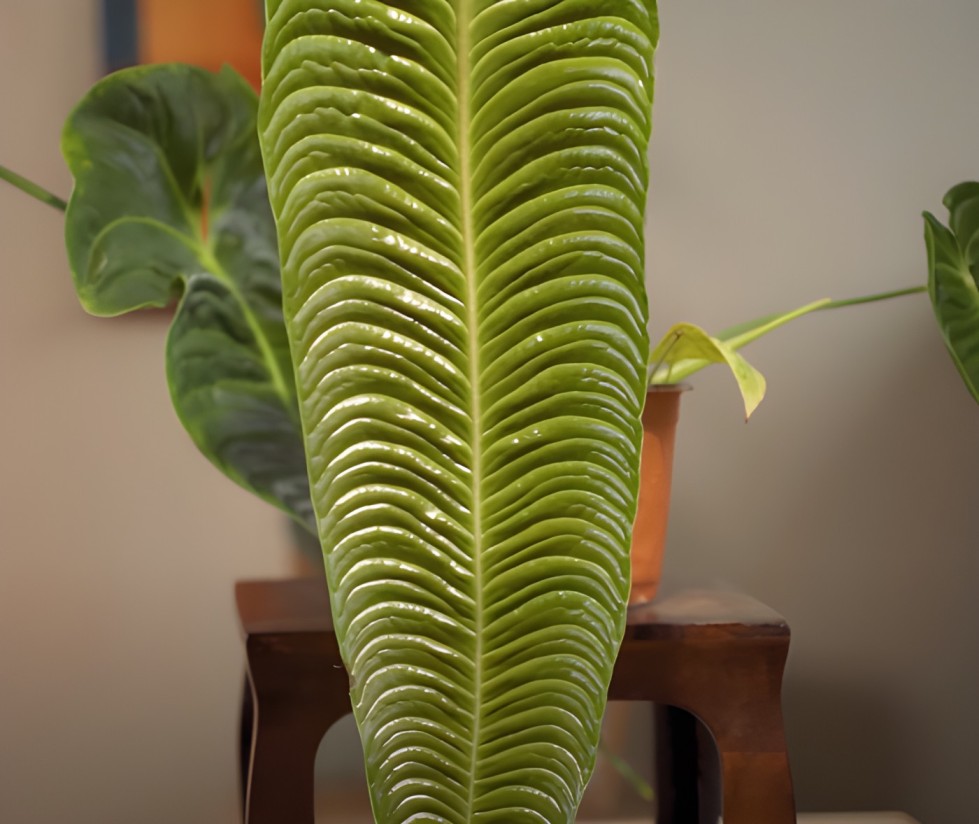
Growth Zone
Think of sunlight so warm it melts on your skin, and humidity so thick it reminds you of a jungle mist. A velvety leaf like King Anthurium thrives in that spot.
Winter chills are a thing of the past for this tropical royalty in USDA zones 10-11. There are places where summer lingers year-round in Florida beaches or warm greenhouses
Pruning Anthurium Veitchii
- To encourage new growth, regularly remove damaged or yellow leaves with clean, sharp scissors.
- Redirect energy for fresh blooms by trimming faded or spent flowers.
- To maintain a bushy and compact shape, prune back the plant if it becomes leggy.
Repotting Anthurium Veitchii
- A repotting should be done every 1-2 years so that the roots have enough space to grow.
- During the growing season, repotting should be done between the months of January and June.
- Make sure the roots are healthy by examining them and trimming any brown or rotting sections.
- Make sure the pot is large enough for root expansion, ensuring good drainage.
- Plants should be repotted into a well-draining mix such as orchid mix or a peat moss and perlite mix.
- Immediately after repotting, water the plants thoroughly and place them in a shaded area to recover.
How to Get King Anthurium to Bloom
| Aspect | Details |
| Light | Bright, indirect sunlight is crucial for blooming. |
| Temperature | Maintain a warm environment (65-80°F or 18-27°C). |
| Humidity | High humidity levels mimic its native habitat. |
| Watering | Keep soil consistently moist, not waterlogged. |
| Fertilization | Apply a balanced liquid fertilizer during growth seasons. |
| Pruning | Remove old leaves to encourage energy for new growth. |
| Soil | Use a well-draining mix, preferably orchid mix. |
| Patience | Blooming may take time; be patient and consistent in care. |
| Avoid Stress | Minimize changes in its environment to avoid stress. |
| Regular Care | Consistent care, including proper watering and fertilization. |
| Healthy Plant | Ensure overall plant health for optimal blooming. |
Growth Rate and Size
An additional leaf will be added every 3 months, enhancing the overall height. You can use this exotic plant as a container garden, hanging basket, or to adorn your desk thanks to its slow and steady pace.
Size Matters
A more reserved approach is preferred by the King Anthurium, while many Anthuriums boast expansive foliage. With leaves that span 12-18 inches, it typically grows to be 2-3 feet tall at maturity. Compact in size, it adds a touch of rainforest charm to your indoor living space without overwhelming it.
Anthurium Veitchii Flower
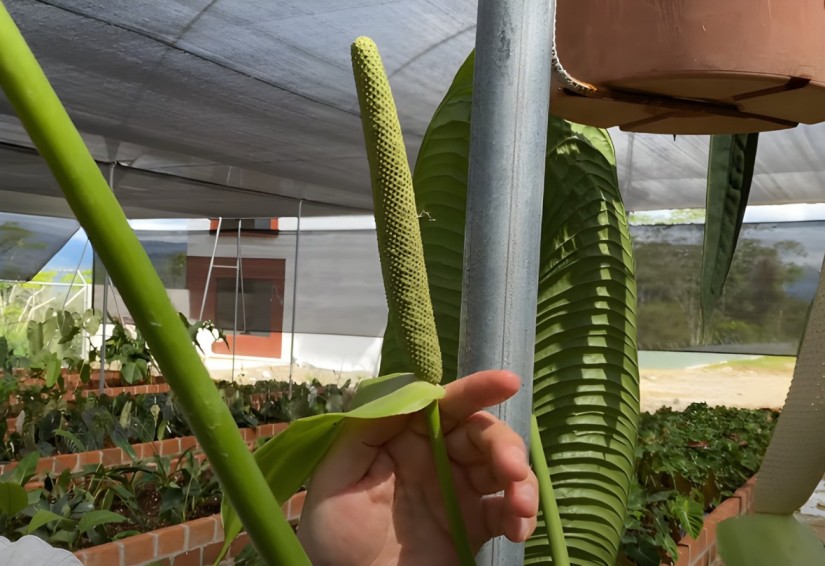
- Pink or white: Imagine the soft blush of a seashell, that’s what these blooms will give you. There is a quiet elegance to these flowers that draws you in. They’re not your typical showy flowers, but they exude a quiet elegance.
- Don’t think dinner plate, think dainty. In these flowers, a spathe (a modified leaf that cradles the spadix) emerges from a slender spadix.
- Often curving gently at the end, the spathe unfolds like a graceful flag. Satin is sculpted into a tiny sail by nature.
Anthurium veitchii Narrow Form
The stunning tropical plant Anthurium veitchii Narrow Form is valued for its graceful, lance-shaped leaves. With its thinner leaf structure than the common type, it gives indoor rooms a sophisticated touch. It thrives in damp environments with filtered light.
Foliage
- It’s all about the color green here – deep, verdant green. A mirror-like shine covers these leaves, as if they were polished emeralds.
- Size: Here’s where the “King” title really shines. This plant boasts leaves that reach a maximum length of three feet! These long and oblong flowers have beautiful veins that crisscross their surface like rivers.
- A touch of texture and intrigue is added to their overall grandeur by the gently rippled leaves. Run your fingers over their cool, smooth surfaces – it’s an unforgettable sensory experience.
Appearance and Fragrance
Imagine a plant with leaves that shimmer and are veined like polished marble, with leaves the color of emerald green curtains. Some of the giant leaves are more than 4 feet long, making this plant a real showpiece in any room.

There is a lush feeling to the “curtains,” which hang from thick, velvety stems. In contrast to most plants, King Anthurium has hidden flowers. They look like tiny cobras due to the creamy white spadix atop the long, slender stalks hidden beneath the leaves.
A glossy, heart-shaped spathe surrounds the spadix. It is often flushed with pink or green color.
A faint, sweet scent reminiscent of vanilla and melons emanates from the leaves of this flower, despite the flower itself having little scent. In addition to the floral beauty of this plant, it also has a subtle aroma, best appreciated up close.
Underwatering And Overwatering
| Symptom | Underwatering | Overwatering |
| Leaf Appearance | Crispy edges: Leaves turn brown and crispy at edges, resembling a frayed king’s robe. | Yellowing leaves: Vibrant green fades, mimicking a king’s robe losing its brilliance. |
| Leaf Posture | Droopy demeanor: Leaves droop like a wilted crown, losing turgor and becoming flimsy. | Brown mushy spots: Unsightly brown spots appear, resembling soggy patches on a velvet cloak. |
| Growth Pattern | Stunted growth: Energy focuses on survival, hindering majestic leaf production. | Leaf drop: Extreme cases lead to the king shedding leaves in response to overwatering stress. |
| Analogy | Imagine the king’s emerald robe fraying at the seams, akin to brown, crispy leaf edges. | The king’s vibrant emerald robe starts fading, much like leaves yellowing due to excess water. |
| Outcome | Urgent royal refreshment needed to restore vitality. | Cease the royal bath overflow to prevent root rot and leaf loss. |
Common Pests and Diseases
- Mealybugs: These white, fuzzy menaces sap sap from your plants, causing them to wilt and weaken. You can find their cottony nests on the leaves and stems of the plants.
- Thrips: Silvery streaks can be seen on your leaves caused by these tiny flying insects. These insects can stunt growth. The best place to find them is near the new leaves and flowers.
- Spider mites: They cause yellowing and dropping of leaves due to fine webs they leave behind.
Disease
- Root rot: This is usually caused by overwatering. If you want to grow King Anthurium, make sure your soil drains well and let it dry slightly between waterings.
- Bacterial blight: Wilting and brown spots are signs of this disease. Isolate affected plants and treat with a copper fungicide.
Problems and Solutions
Problem: Crispy Edges and Brown Tips
Solution: Consistently water the garden, ensuring the soil remains evenly moist without becoming waterlogged. Adjust the frequency based on environmental conditions.
Problem: Yellowing Leaves
Solution: Review light exposure; provide bright, indirect sunlight to Anthurium-Veitchii. Monitor for improvement after trimming away yellowed parts.
Problem: Root Rot
Solution: Ensure proper drainage between waterings by allowing the soil to dry between waterings. You should repot the plant if necessary, trimming the roots that are affected, and using fresh, well-aerated soil.
Problem: Leaf Drop
Solution: Ensure that the watering routine is not overwatering. In order to reduce stress, ensure that the environment is properly lit, humidified, and heated.
Problem: Droopy Demeanor
Solution: Maintain a high humidity level by misting the leaves frequently. Check soil moisture and adjust watering accordingly.
Problem: Stunted Growth
Solution: When the growing season begins, apply a balanced fertilizer. Ensure this plant receives adequate light and maintains a healthy temperature.
Anthurium Veitchii Narrow vs Wide
| Feature | Narrow | Wide |
|---|---|---|
| Leaf Shape | Narrow, lance-shaped leaves | Wider, more oval or heart-shaped |
| Leaf Size | Leaves are generally longer and narrower | Leaves are broader and shorter |
| Leaf Texture | Smooth, often glossy surface | Smooth, often glossy surface |
| Leaf Color | Green with prominent white or silver veins | Green with prominent white or silver veins |
| Vein Pattern | Veins are more pronounced, creating a striking contrast | Veins are still visible but may be less pronounced |
| Plant Size | Typically smaller in overall size | Tends to be larger and more robust |
| Growth Habit | Upright growth habit, with leaves arranged in a more linear fashion | Generally bushier with a more open growth habit |
| Preferred Growing Conditions | Prefers high humidity and indirect light | Thrives in high humidity and filtered light |
| Suitable Environments | Well-suited for terrariums or smaller spaces | Ideal for larger indoor spaces or tropical gardens |
| Popular Uses | Often used as an ornamental houseplant | Valued as a decorative indoor or outdoor plant |
Toxicity
While King Anthurium is beautiful, it contains compounds that are harmful if consumed. It is toxic to humans and may experience skin irritation after coming into contact with sap.
It is important to keep curious pets away from this tropical beauty. It is also toxic to Cats and dogs which may experience discomfort if they consume calcium oxalate crystals in the plant.
The symptoms of this condition include drooling, difficulty swallowing, and irritation. Although Anthurium-Veitchii is not lethal, it’s best to keep it away from children and pets. Medical or veterinary attention should be sought immediately if accidental ingestion occurs.

Varieties/Types
- Standard Anthurium-Veitchii: Featuring glossy leaves and greenish-white spathes, this is a classic choice. A perfect start for Anthurium enthusiasts.
- Anthurium-Veitchii ‘King’: An elegant variant with a majestic appearance. In addition to larger leaves, this variety adds a touch of grandeur to your indoor landscape.
- Anthurium-Veitchii Hybrid: Hailing from a variety of Anthurium species, hybrids offer a unique blend of colors and shapes for a contemporary look.
- Anthurium-Veitchii ‘Narrow Form’: This variant has slender leaves, providing a sleek appearance that would appeal to any plant enthusiast.
- With its broad leaves, Anthurium Veitchii ‘Wide Form’ brings an air of boldness and strength to your Anthurium collection.
Uses
- Ornamental Beauty
- As an ornamental plant, King Anthurium enhances tropical gardens and indoor spaces.
- Air Purification
- In addition to purifying indoor air and removing toxins, it improves the quality of air in the home.
- Therapeutic Presence
- Providing a sense of well-being with its lush foliage, it provides a soothing and therapeutic presence.
- Aesthetic Appeal
- Adding a touch of elegance to any setting is the plant’s glossy leaves and distinctive blooms.
- Natural Décor Element
- It blends seamlessly with a wide range of interior design styles, making it an excellent natural decor element.
- Indoor Gardening Joy
- Thanks to its unique characteristics and climbing nature, it brings joy to indoor gardening enthusiasts.
- Botanical Interest
- Plant enthusiasts and collectors are intrigued by Anthurium-Veitchii because of its rarity and beauty.
- Positive Impact on Mood
- The responsibility of caring for this plant can enhance one’s mood, create a sense of responsibility and create a sense of connection with the natural world.
Exploring the Enchanting World of King Anthurium Characteristics
In the realm of Anthurium-Veitchii varieties and characteristics, enthusiasts are captivated by the diverse traits exhibited by this unique species. King Anthurium recognized for its regal stature, holds a special place in the hearts of plant enthusiasts.
The intriguing hybrids, such as anthurium-veitchii x andreanum and anthurium andreanum x veitchii, showcase the plant’s adaptability and ornamental charm. Enthusiasts are drawn to its climbing nature, prompting queries about whether anthurium-veitchii is a climber.
The mystique deepens with cultivars like the king anthurium-veitchii, captivating with its majestic allure. Those invested in the care of these botanical treasures explore a spectrum from the delicate needs of this plant babies to the meticulous care required for super narrow and hybrid varieties.
Whether tending to the wide form or narrow form, the journey of nurturing anthurium-veitchii is an exploration of horticultural finesse.
Mastering the Art of Caring: A Global Horticultural Pursuit
Caring for Anthurium-Veitchii is a delicate art, requiring attention to specific nuances. Devotees navigate the intricacies of humidity and temperature, contemplating the growth rate of these botanical wonders.

From the delicate moss poles that support their ascent to the careful considerations for their moss pole, each element contributes to the well-being of this plant. King veitchii care becomes a noble pursuit, as individuals seek the key to fostering healthy and vibrant specimens.
The global pursuit of these extraordinary plants extends from Canada and Australia to India, with geographical references becoming waypoints in the journey of obtaining or cultivating anthurium-veitchii.
Horticulturists and collectors alike engage in the exchange, sale, and purchase of these treasures, further enriching the global tapestry of Anthurium-Veitchii enthusiasts.
FAQs
Is anthurium Veitchii hard to care for?
For beginners, this plant can be challenging, but it thrives under moderate conditions and moderate care.
Is anthurium Veitchii rare?
Although not found in every store, it is not considered extremely rare. In comparison to the past, it is now more accessible.
Does anthurium Veitchii climb?
It does not climb, but when placed on shelves or hung, its leaves can cascade elegantly.
How fast do anthurium Veitchii grow?
In general, growth is considered moderate, not incredibly fast depending on care and conditions. Its height can range from 1 meter to 1.5 meters.
Is anthurium Veitchii toxic?
Anthurium Veitchii is toxic to humans and pets if ingested, causing irritation and possible health problems.
Is anthurium Veitchii slow growing?
However, its pace may be considered moderate when compared with some fast-growing houseplants.
What is the anthurium Veitchii natural habitat?
There are high humidity levels and filtered sunlight in its natural habitat in Colombia’s rainforest canopy.
How tall does Anthurium veitchii grow?
The leaves and vines of this plant can grow up to 3 feet in length, with the potential of adding more length through cascading vines.
Why is my Anthurium veitchii dying?
Insufficient light, overwatering, and temperature stress are a few factors that can cause Veitchii’s death. In order to diagnose the issue, assess your care routines and your environment.
Why is my Anthurium veitchii drooping?
A drooping eyebrow may indicate various problems, including low humidity, watering issues, or temperature stress. You should check the soil moisture, adjust humidity levels, and make sure the temperature is appropriate for the plant.
How cold can Anthurium veitchii tolerate?
Although Anthurium Veitchii prefers warm weather and can tolerate occasional dips down to 60 degrees Fahrenheit (around 15 degrees Celsius), prolonged cold spells shouldn’t be allowed.
Is Anthurium veitchii toxic to cats and dogs?
Dogs and cats can be toxic by Anthurium Veitchii just like humans and children. Don’t let curious paws or tiny hands get their hands on it.


